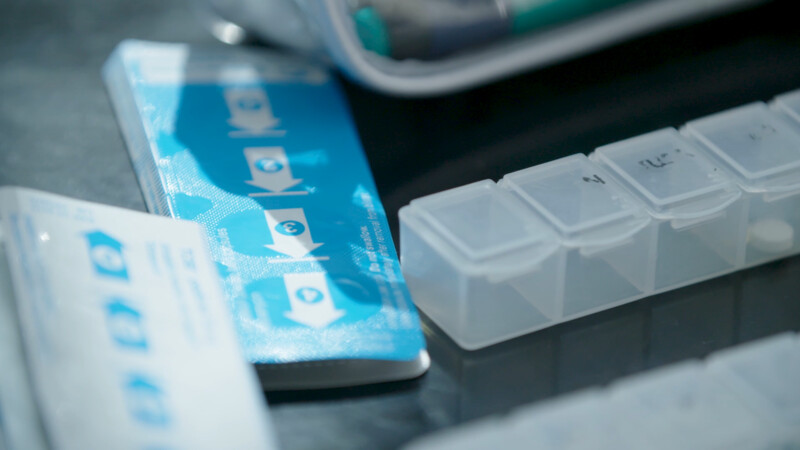Cystic fibrosis is caused by mutations in the cystic fibrosis transmembrane conductance regulator (CFTR) gene that affect the production of the CFTR protein. When the
We support the development of drugs that target specific defects in the CFTR protein. As a group, these drugs are called modulators because they are intended to modulate the function of the CFTR protein so that it can serve its primary function: to create a channel for chloride (a component of salt) to flow across the cell surface.
When proper chloride flow is reestablished,
There are two main types of
- Potentiators
- Correctors
Potentiators
The CFTR protein is shaped like a tunnel that can be closed by a gate. Potentiators are CFTR modulators that hold the gate open so chloride can flow through the cell membrane.
The drug Kalydeco® (ivacaftor) is a potentiator. This drug can help patients with gating and conduction mutations in CFTR. It also works on residual function and
Correctors
The next type of
Nearly 90 percent of people with CF have at least one copy of the F508del mutation, which prevents the CFTR protein from forming the right shape. Corrector drugs help the CFTR protein to form the right shape, traffic to the cell surface, and stay there longer. But, even with correctors, only some of the CFTR protein reaches the cell surface. Additionally, the proteins that do reach the cell surface do not open sufficiently to allow chloride to pass out of the cell.
But, if a corrector(s) is used in combination with a potentiator -- such as ivacaftor -- to hold the gate on the CFTR protein open, enough chloride can then flow to reduce the symptoms of CF. In the newest modulator on the market, the correctors elexacaftor and tezacaftor were combined with ivacaftor to form Trikafta®, a triple combination that can be used to treat people with CF who have at least one copy of the F508del mutation (regardless of their second mutation) or at least one copy of 177 specified mutations.
Next-Generation Modulators
Ivacaftor and lumacaftor, a component of Orkambi®, are sometimes called “first-generation modulators” because they were the first modulators approved to treat people with CF. Tezacaftor, approved in February 2018 as part of Symdeko®, is also considered a first-generation modulator.
Elexacaftor is considered to be part of the “next-generation” modulators, which are potentially more effective than the first-generation CFTR modulators. Other next-generation therapies are in development. They also are likely to be part of a triple-combination therapy to provide more people with CF a variety of treatment options. It is important to have alternatives because individuals respond differently to drugs. In addition, not everyone can take currently approved modulators. This population includes people who experience side effects, have drug interactions, or have mutations that are not responsive.
Individually, each of the three drugs in a triple-combination therapy addresses a different aspect of the defective CFTR protein. When used in combination, the results may be better than using one or two of the drugs alone.
***
Reference to any specific product, process, or service does not necessarily constitute or imply its endorsement, recommendation, or favoring by the Cystic Fibrosis Foundation. The appearance of external hyperlinks does not constitute endorsement by the Cystic Fibrosis Foundation of the linked websites, or information, products, or services contained therein.
Information contained on this site does not cover all possible uses, actions, precautions, side effects, or interactions. This site is not intended as a substitute for treatment advice from a medical professional. Consult your doctor before making any changes to your treatment.

